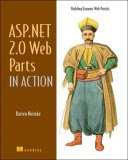rdfstorage news.rdf --out "mysql:rdf:database=news;username=test"
This assumes that a new database (schema) called "news" has been created in MySQL and that a user "test" exists that doesn't require a password (both these things can be done using the MySQL Administrator UI).
Initially running this command line in the installed version of the SemWeb\bin directory results in the following error being generated:
System.IO.FileNotFoundException: Could not load file or assembly 'MySql.Data, Version=1.0.8.0, Culture=neutral, PublicKeyToken=c5687fc88969c44d' or one of its dependencies. The system cannot find the file specified.
This error means that the MySQL.Data.dll is missing, so the first step is to get this from MySQL ADO.Net Data Provider 5.0.7
After placing this DLL in the bin directory and running the command line again, the following error will appear:
System.IO.FileLoadException: Could not load file or assembly 'MySql.Data, Version=1.0.8.0, Culture=neutral, PublicKeyToken=c5687fc88969c44d' or one of its dependencies. The located assembly's manifest definition does not match the assembly reference. (Exception from HRESULT: 0x80131040)
In this case the important part is the "manifest definition does not match the assembly reference" bit - as happened with the SQLite DLL, this MySQL DLL is newer than the version that was used to build the SemWeb.MySQLStore.dll and so the 2 DLLs are incompatible. We need to rebuild this SemWeb DLL.
The steps to do this are as follows:
- Open the SemWeb solution in Visual Studio
- Add a new project of type "Class Library" and called "SemWeb.MySQLStore"
- Delete the default "Class1.cs" that gets added to the project
- Choose to add an existing item to the project and pick "MySQLStore.cs" from the SemWeb\src directory
- Add a reference to the "MySQL.Data.dll " that should already be in the SemWeb\bin directory
- Add a reference to the SemWeb project
- In the project properties, set the output path to the SemWeb\bin directory
These are the exact same steps that were required for the SQLiteStore DLL (although obviously referencing different files). However, building the MySQLStore DLL now results in the following compiler error:
The type or namespace name 'MySqlConnection' could not be found (are you missing a using directive or an assembly reference?)
To fix this error the following needs to be added to the top of the MySQLStore.cs file:
using MySql.Data.MySqlClient;
So the complete set of using directives at the top of the file should now appear as:
using System;
using System.Collections;
using MySql.Data.MySqlClient;
using System.Data;
The project should now rebuild successfully and the new SemWeb.MySQLStore.dll should now appear in the SemWeb\bin directory.
Unfortunately this still isn't the end of the process - running the command line again results in the following error:
MySql.Data.MySqlClient.MySqlException: Table 'news.rdf_statements' doesn't exist
The DLL is now ok, its just that the database that its creating has a few problems; inspecting the database in MySQL Administrator shows that the "rdf_literals" and "rdf_entities" tables have been created but the "rdf_statements" table hasn't been made.
Setting the SEMWEB_DEBUG_SQL environment variable (type "set SEMWEB_DEBUG_SQL=1" at the command prompt) and then running the command line again generates some debug information (alternatively put a break point on the "
CreateTable" function in the SQLStore.cs file and run the program in the debugger, after first setting up the command line arguments in the project properties). The error generated is:
System.FormatException: Input string was not in a correct format.
This is caused by the SemWeb database "Open" function (from MySQLStore.cs) querying the version of the database and then trying to set this into the .NET Version class; however, the version string returned from my version of MySQL is "5.0.41-community-nt" and this doesn't match with the expected .NET version string format, which is expecting only integers seperated by a period character ('.') - hence an error is thrown on the first call to "Open" and so the creation of the first database table ("rdf_statements") fails.
To fix this I've just put a try-catch around the setting of the version string, so basically I just ignore when the version can't be set.
private void Open()
{
if (connection != null)
return;
MySqlConnection c = new MySqlConnection(connectionString);
c.Open();
connection = c; // only set field if open was successful
using (IDataReader reader = RunReader(@"show variables like 'version'"))
{
reader.Read();
try
{
version = new Version(reader.GetString(1));
}
catch(Exception e)
{
if (Debug) Console.Error.WriteLine(e.Message);
}
}
}
Finally, rebuilding the SemWeb DLL and re-running the command line successfully adds the RDF to the database:
news.rdf 0m0s, 81 statements, 1728 st/sec
Total Time: 0m2s, 81 statements, 30 st/sec





